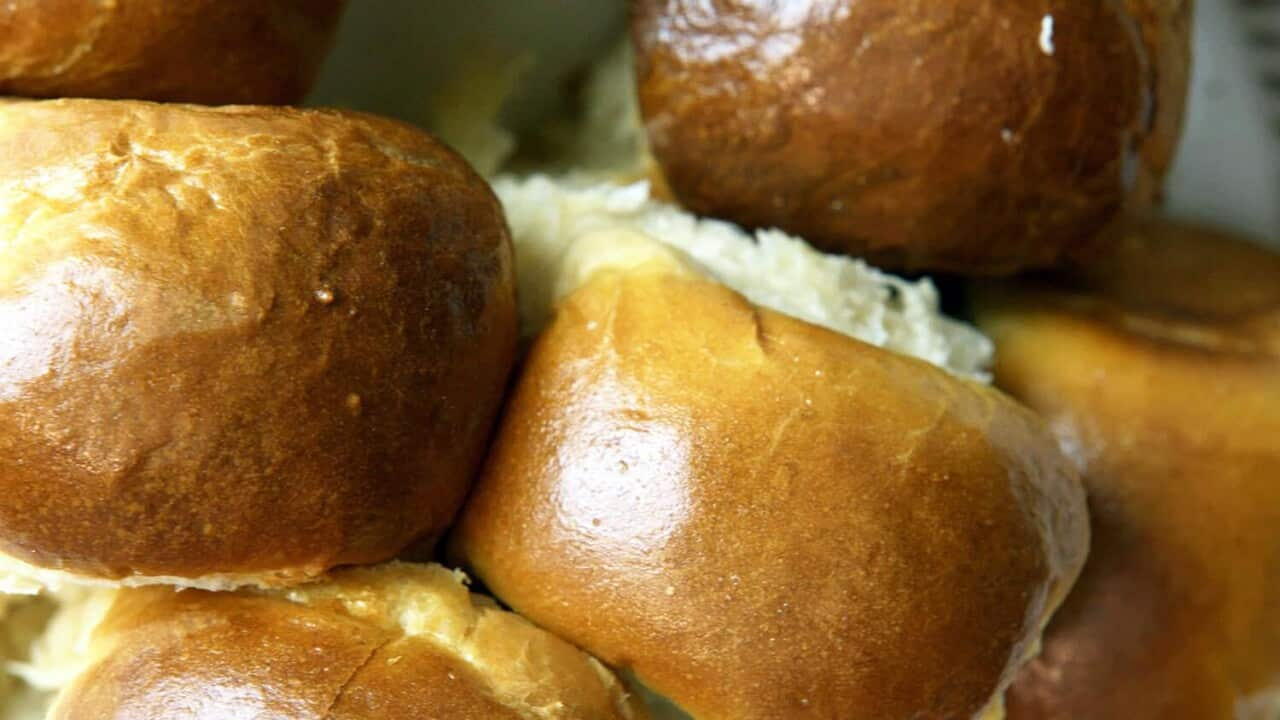--- airs weeknights on SBS Food at 7.00pm and 10.00pm, or stream it free on . ---
The natural balance of sweet and sour flavours in a traditional is precisely why any dish that features it instantly becomes comfort food. A well-balanced dish just hits the spot like nothing else can.
It's a bonus that balsamic matches so well with so many flavours. It might have started life in Modena, in the Italian region of Reggio Emilia (and true balsamic vinegar still needs to originate from this region), but it's been adopted by many cuisines to add depth of flavour and unbeatable balance.
Balsamic vinegar is protected by a Designation of Protected Origin.
Balsamic vinegar is protected by a Designation of Protected Origin, which means that in order for a product to be called traditional balsamic vinegar, it needs to have originated in either Modena, or further afield in Reggio-Emilia. Balsamico Tradizionale di Modena is produced within the zone in and around the city of Modena and Balsamico Tradizionale di Reggio Emilia is produced within the zone in and around the province of Reggio Emilia.
Balsamico Tradizionale
Traditional balsamic vinegar is made from just one ingredient: grapes. But not just any grapes. Historically these would be Trebbiano grapes, but other white grape varieties grown in the region, such as Lambrusco, Spergola and Sauvignon, are also approved.
Traditional balsamic vinegar is made from just one ingredient: grapes. But not just any grapes.
The first press of grape juice is boiled to a rich concentrate, fermented, and acidified by aging it in wood for at least 12 years. Barrels approved for aging must be from oak, chestnut, mulberry, cherry, ash or juniper.
After 12 years (sometimes up to 24 years or even longer), the original volume of balsamic has been reduced from an 18-gallon barrel (about 68 litres) to less than one gallon of vinegar (about 3.8 litres). Now that's playing the long game...
With all of this going on, understandably every drop of balsamic vinegar is precious. Here's how to honour its glory.

Source: Adam Liaw

This bake is easy to prepare for a mid-week dinner – just toss everything together in the one dish and let the oven work its magic. Source: Ebury Press / Dan Jones

Kisir is Turkish tabouleh, traditionally made from burghul, tomatoes, capsicums, fresh herbs... and now balsamic vinegar. Source: Murdoch Books

If you're making a dish that's both sweet and savoury, a splash of balsamic will beautifully enhance both elements. Source: Alan Benson

Dotted with salty, meaty kalamata olives, olive bread is a great starter served with oil and balsamic vinegar. Source: One World Kitchen

Certainly not the shepherd's pie you might have grown up with. Source: Lyndey Milan's Baking Secrets

Serve these dried, baby balsamic-glazed figs with a salty Greek cheese as part of a mezze platter. Source: Anson Smart

The harmonious addition of BV adds depth to slow-cooked pork. Source: Chris Chen

Baked eggplant parmigiana takes the Aussie pub classic and gives it a vego shake. Source: Chris Middleton

Balsamic vinegar should be on high-rotation in every vegetarian's pantry. Source: Smith Street Books

Buckwheat, a pseudo-grain like quinoa and amaranth, is gluten free and has a delicious earthy taste that teams well with everyone's favourite vinegar. Source: Murdoch Books
READ MORE

Homemade mozzarella and fig salad

Steak with chimichurri equals food of the (green) goddess. Source: Bondi Harvest












